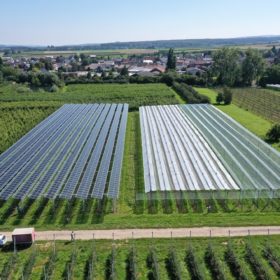Dealing with Pakistan’s solar panel glut
Solar panels flooded into Pakistan during the first half of 2024 and oversupply has wiped out module margins. Solar developers want greater liberalization of the nation’s electricity market but the government is concerned that moving too quickly could place more pressure on utilities already burdened by high capacity payments.
India should invest in friendly nations for critical minerals, says IEEFA
India should invest in resource-rich, friendly nations to source critical minerals such as lithium, cobalt, and nickel, says the Institute for Energy Economics and Financial Analysis (IEEFA).
The future of net metering in Pakistan
A report by the Institute for Energy Economics and Financial Analysis (IEEFA) sets out policy recommendations for the government of Pakistan if it is to replace net metering with net billing.
India, Australia sign deal to secure supply chains
Economic cooperation between India and Australia may open doors for investment in clean energy technology, but challenges still abound in a competitive global market. Vibhuti Garg and Shantanu Srivastava, of the Institute for Energy Economics and Financial Analysis (IEEFA), discuss the role that public funding and resource pooling could play in supporting manufacturing ambitions.
Blended finance key to scaling small-scale solar projects
The Institute for Energy Economics and Financial Analysis (IEEFA) and auctusESG say in a new report that scaling up financing for renewable energy assets such as solar minigrids depends on the combination of private and public capital in a risk-adjusted return structure.
The Hydrogen Stream: Siemens commissions 8.7 MW electrolyzer in Germany
As Siemens commissions Germany’s second largest electrolyzer at the Energy Park in Wunsiedel, Engie has taken the Final Investment Decision for a project in Western Australia, scheduled for completion in 2024. Meanwhile, two reports shed light on the future of green hydrogen: on the demand side, the MENA region could use it to become the global leader of green steel; on the supply side, BNEF welcomes the support commitments coming from Europe and the United States.
‘Bangladeshi energy masterplan should focus on renewables’
With the finances of national utility the Bangladesh Power Development Board in disarray thanks to rising capacity payments for often-inactive conventional power plants, renewables offer the hope of fiscal sustainability, according to the Institute for Energy Economics and Financial Analysis.
The case for agrivoltaics in India
There is enormous potential to develop the agrivoltaics sector in India, as about 60% of the country’s land area is devoted to agriculture. However, the rollout of projects that pair farming with PV cannot proceed until the authorities iron out a number of policy concerns and regulatory issues.
Huge Vietnamese solar park could hit 2.8 GW within a year
An energy transition investment report published this week has also revealed the former world record low price for solar power announced by the Al Dhafra project in Abu Dhabi last year, has fallen even lower since.
Indian reliance on polycrystalline tech production leaves it trailing China
Polycrystalline PV technology, which is seeing its market share tumble on the global stage, still dominates India’s small solar manufacturing base and is emblematic of the R&D shortfalls in the sector, according to a survey of the state of the industry.









